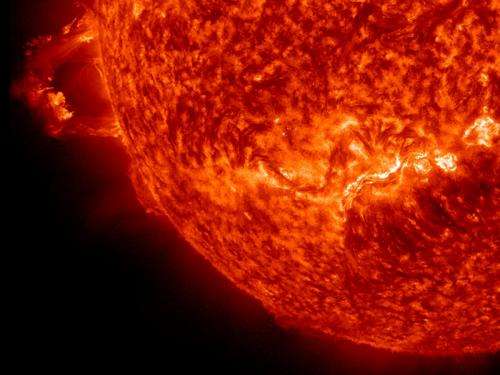The Sun erupted with two prominence eruptions, one after the other over a four-hour period (Nov. 16, 2012). The action was captured in the 304 Angstrom wavelength of extreme ultraviolet light. It seems possible that the disruption to the Sun’s magnetic field might have triggered the second event since they were in relatively close proximity to each other. The expanding particle clouds heading into space do not appear to be Earth-directed. Credit: NASA/SDO/Steele Hill
(Phys.org)—The Sun erupted with two prominence eruptions, one after the other over a four-hour period on Nov. 16, 2012, between the hours of 1 and 5 a.m. EST. The red-glowing looped material is plasma, a hot gas made of electrically charged hydrogen and helium. The prominence plasma flows along a tangled and twisted structure of magnetic fields generated by the sun's internal dynamo. An erupting prominence occurs when such a structure becomes unstable and bursts outward, releasing the plasma.
The action was captured by NASA's Solar Dynamic Observatory (SDO) in the 304 Angstrom wavelength of extreme ultraviolet light. The expanding particle clouds heading into space do not appear to be Earth-directed.
More information: What is a prominence?
For answers to this and other space weather questions, please visit the Spaceweather Frequently Asked Questions page.
Provided by NASA
























